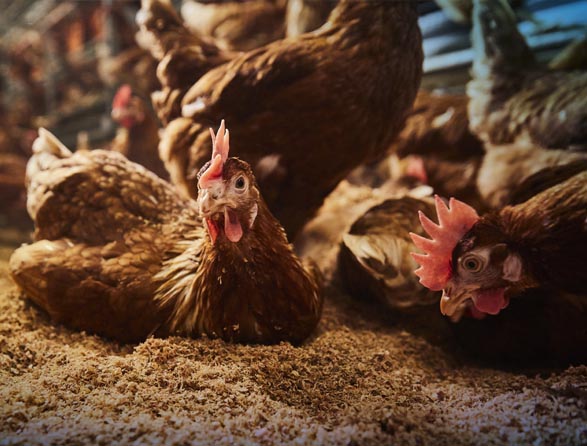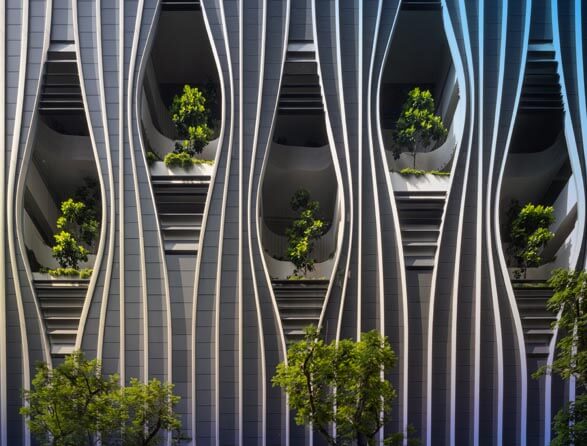If you want a glimpse of what dense urban living may be like in the future, look no further than the island republic of Singapore. Strolling around the city – which occupies the entire country – you notice green oases everywhere you look: tucked into pockets, into buildings and arrayed on rooftops.
But the city’s lush greenery belies its massive urban food insecurity. Because the city occupies the entire country, leaving just 1% of its land for farming, Singapore imports 90% of its food. This works well . . . until a pandemic, natural disaster, war or other crisis disrupts the flow of food from neighboring countries. And inevitably, crises do occur.
In 2019, Singapore ranked as the world’s most food-secure nation in the Global Food Security Index produced by Economist Global. After all, it is one of the world’s wealthiest, on a per capita basis.
Then, the COVID pandemic disrupted global supply chains, wiped out jobs, and sent prices soaring. Many families suffered. An example of what food insecurity looked like for low-income Singapore residents during the pandemic: For eight months, one father fed his family a daily diet of instant noodles, bread dipped in coffee, and biscuits, “getting by on the goodwill of relatives and church friends.” Stories like his explain why, in 2022, Singapore dropped from the world’s most food-secure nation into the 70th percentile: while food remained available, cost put it beyond the reach of many.
Now, Russia’s war on Ukraine is tightening food supplies globally. Together, Ukraine and Russia supply more than a quarter of the world’s wheat. The impact is disproportionate for Singaporeans, who rely on a handful of countries to supply their food. Alternative sources are difficult to find; even countries outside the conflict have stopped exporting food, to ensure sufficient supply for their own citizens. The snowball effect is especially concerning for a city-state like Singapore, which lacks farmland of its own.
To permanently remove the threat of food insecurity, Singapore’s leaders are rallying – tapping into technological, business, academic and government resources to accelerate innovations in a fast-emerging new industry: urban farming.

Urban farming reduces food insecurity
Singapore’s government has issued a “30 by 30” vision aimed at producing 30% of the country’s food locally by 2030, and backs it with funding to support new processes and technologies. The goal is “to build up our agri-food industry’s capability and capacity to produce 30% of our nutritional needs locally and sustainably,” according to the government’s Green Plan pages.
“30 by 30” emphasizes the value of urban farming, with Singapore pioneering solutions to grow food sustainably, even beautifully. Produce and herbs are being planted among new and existing landscapes – on the ground, inside buildings, on walls, on rooftops and more.
The program provides grants for scores of research and design projects, attracting applications from around the globe, including Green Harvest, a Massachusetts-headquartered hydroponics company. Domestically, recipients include Singapore-based ComCrop (produce), Chew’s Agriculture (eggs), Genesis One Tech Farm (produce), LivFresh (hydroponic greens) and VertiVegies (indoor vertical farming).
Urban farming can take place anywhere, but tends to be concentrated indoors, where growers can control water, temperature and soil conditions and avoid pests and disease. In cities, indoor space also is more available, taking the form of everything from abandoned warehouses to shipping containers. This enables local, year-round harvesting regardless of weather.
By growing food locally, leaders also expect to improve its nutritional value. Food begins to lose nutritional value the moment it is harvested, and nutrition continues to drop until it is consumed. Compared to imported foods, locally grown foods have many more nutrients; they can even be harvested and eaten on the same day.
Urban-grown produce also can be produced with less – or no – fertilizers or pesticides when grown in controlled conditions. Growers feed the plants a perfect combination of nutrients in a controlled environment with just the right amount of light, water and air movement to strengthen them.

Urban farming reduces environmental impacts
Eliminating the need to transport food from rural areas to cities reduces carbon emissions. It also eliminates food and water waste. The United States Department of Agriculture calculates that “approximately 30-40% of food that farmers around the world produce is never consumed. Between 21% and 33% of water used across US farms is wasted.” By contrast, urban agriculture companies design their operations to be clean, low-energy, low-water processes.
Promising research is underway to broaden urban agriculture. Farms atop buildings, for example, can also help cool building temperatures in the tropical city, reducing energy use. Evidence also indicates that plentiful plantings bring mood, energy and air quality benefits for the city’s residents.
Singapore’s wide range of urban farming approaches
If you can imagine a type of urban farm, it probably exists in Singapore. The city’s farms come in myriad shapes and sizes, supported by an amazing array of innovative technologies in hydroponics, aeroponics and more.
One recent example is the newly completed CapitaSpring building. It’s now tied for the title of Singapore’s tallest high-rise and incorporates 80,000 plants into its design – 1.5 times as much greenery as could have been grown on the ground that the building covers. It’s a haven of urban gardening, including a rooftop garden with 150 species of fruit trees, herbs and flowers. The produce and greens are available to the building’s restaurants and scores of “hawkers” – permanent vendors selling food in the building’s sprawling food courts.
Just 14 miles from the center of Singapore, Sky Greens grows food in outdoor greenhouses. Sky Greens’ three-story, A-frame growing towers use gravity to rotate the rows of plants. This ensures equal distribution of nutrients to each row, along with the perfect amount of natural light. A single tower has a footprint about the size of a typical bathroom and produces 10 times the yield, compared to a traditional soil-based farm covering the same area. Today, fewer than 200 of the towers have been built, but short-term plans call for 300 more. Longer-term, the company plans to build 2,000 of the towers locally.
Citizen Farm occupies 86,000 square feet (about 8,000 square meters) in what once was the city’s largest prison. The farm’s greens and vegetables supply markets and restaurants, and individuals can subscribe to receive periodic boxes of their local, organic and nutritional produce.
Urban aquaculture project provide protein
While produce is important, citizens also need protein. Not surprisingly, Singapore is also a leader in aquaponics – a self-sustaining system for growing fish and plants together.
In November 2022, the Singapore Food Administration announced its “AquaPolis Programme” in partnership with Singapore National University, a research lab and seven industry partners, including Vertical Oceans and Universal Aquaculture corporations.

The city’s first aquaponics garden within a hotel provides guests with fish protein, plus organic produce that is more nutrient-dense and better-tasting than vegetables grown on traditional farms. Nutrients from fish waste fertilize the rows of lettuce, microgreens and herbs, while the plant roots filter the water to keep it safe for the fish.
Aquaponics is a perfect example of a well-thought-out food system – accounting for the entire process from sourcing organic, untreated seeds, through production and sustainable waste management.
Community gardens keep food affordable
Singapore is one of the world’s most expensive places to live, and urban farm foods are even more expensive for consumers in the short-term. Having a stable food supply, however, helps to compensate for the cost.
“Unexpected events such as Malaysia’s halt of chicken exports, panic buying and hoarding, [mean that] anyone at any moment can be vulnerable to food insecurity, even in an affluent country such as Singapore,” FoodBank Singapore observes.
Community gardens are an alternative that bolsters nutrition without boosting costs. In public housing areas of Singapore, gardens grow amid tall rows of buildings, and on their rooftops. These “agrihoods” offer membership to gardens. The only cost is the effort each resident contributes to maintain them.
Singapore’s National Parks Board sponsors another approach to community gardens: allotment garden plots within public parks. The plots typically include raised beds that can be leased for a nominal cost for a period of three years.
Having access to gardening space can be empowering to families.
“It may sound strange to be excited by a 2.5 meters by 1 meter (just over 8 feet by 3 feet) concrete box filled with soil, but as plant lovers strapped for space and sunlight in our apartments, this was too good to miss,” one resident said.
Examples like these and more abound in Singapore. Leaders don’t expect urban gardening to solve all their food insecurity challenges, but reducing the city-state’s dependence on imported food is an important start. Meanwhile, the Singapore Food Agency is incorporating additional strategies, like expanding its network of suppliers.
Singapore’s food-secure future
Singapore’s approach holds promise for other urban cities. Garden cities can replace concrete jungles. In fact, urbanites around the world would benefit from more local produce. Researchers are monitoring “food deserts” – urban areas without access to fresh foods. The people in these deserts are not hungry, necessarily. They may feel full, but many are malnourished by diets high in processed food.
Even countries with extensive farmlands face the growing threats of global warming and urban population explosion. As these trends increase, the urban farming techniques used in Singapore may mark a path toward food security for the entire world.
Learn more about food insecurity, urban farming, and the special challenges of sustainable cities.

